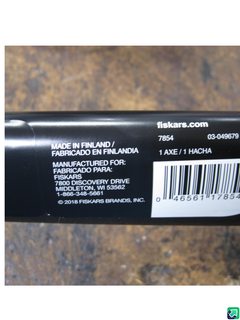telecasterfool
ArboristSite Operative
I have four different Council axes. I have no issues with the quality of the handles. I had one that loosened almost immediately, and I re-set it with an additional conical wedge. Wooden handles can be broken, that's just the way wooden handles are. I don't think people understand that anymore, maybe because handles like the Fiskars exist. Wooden handles can be improved for splitting, a little. I've found that wrapping paracord around the handle from the bottom of the head down about 3" and then treating the paracord with varnish (I use Watco) creates a great barrier to scuffs and chips. This is not an overstrike protector. If you seriously overstrike a big axe on a hardwood, you'll probably break the handle.I have 2 Council axes- handles excellent on both. Its mighty easy to overstrike and break a handle no matter how good it is or who makes it. Maybe the plastic/fiberglass handles are harder to break, but I've no interest in swinging one of them- I'll do the work on getting an accurate swing.
To the original poster: After you get some time on the Fiskars stuff, you may want to try a wood handles splitting axe, just to see if you want to evolve in that direction. Wooden handles feel better to a lot of people, and you can create an entire tool the way you like. I'm not advocating either style of tool. I own, use, and enjoy both. Good luck!


















































